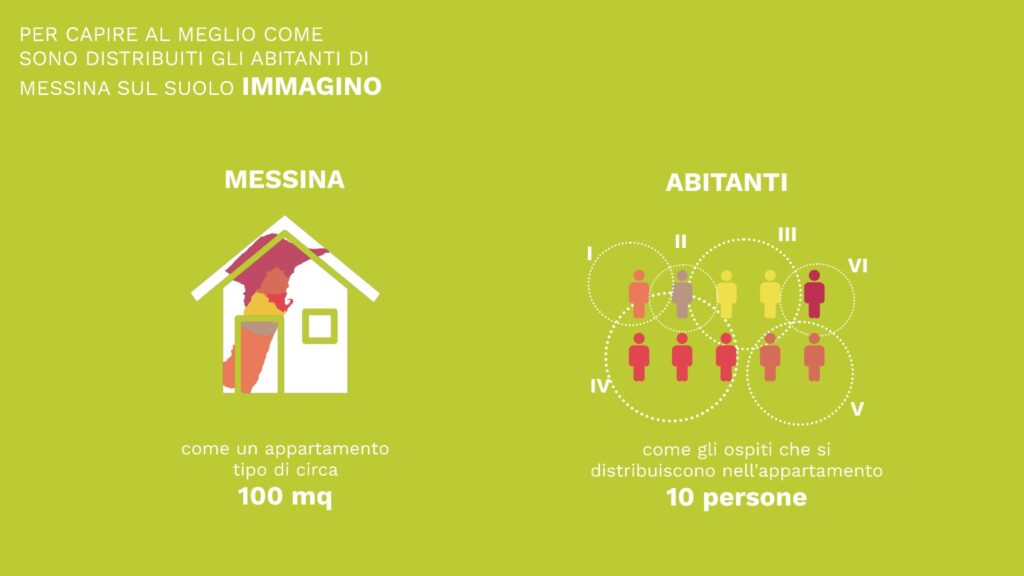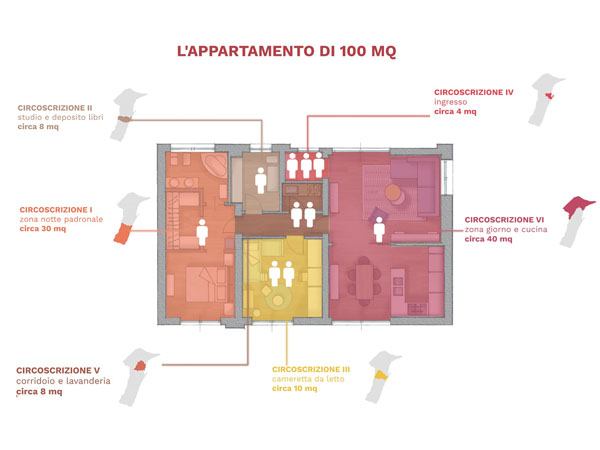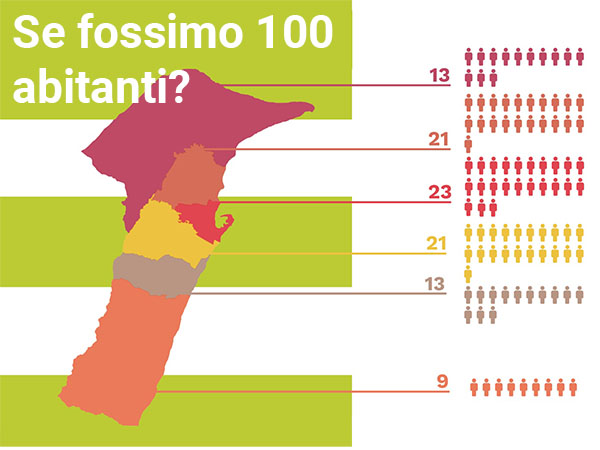The objective was to illustrate, through an innovative and easily understandable approach, the demographic and territorial distribution of the inhabitants of Messina. The presentation, titled ‘If We Were 100 Inhabitants?’, reduced the city’s population to a hypothetical community of 100 inhabitants, maintaining the same proportional characteristics as the real inhabitants of Messina. This method allowed us to clearly and immediately visualize the demographic and spatial dynamics of the city.
The population of 100 inhabitants was equally divided between men and women, reflecting the demographic reality of Messina. We then classified the inhabitants into three age groups: 0-24 years, 25-64 years, and over 65 years. The inhabitants were further divided among the six districts of the municipality of Messina to represent the geographical distribution and population density.
Demographic and territorial information about Messina was made accessible and understandable to all citizens. Through the metaphor of the apartment and the reduction of the population to 100 inhabitants, we were able to present complex data in a clear and engaging way, promoting greater public participation and a shared understanding of the challenges and opportunities of the Urban Strategic Plan of the Strait of Messina. This innovative representation stimulated debate and community participation, laying the foundations for an inclusive and well-informed strategic plan that responds to the real needs of all the inhabitants of Messina.
Methodology
Division by Gender and Age Groups:
- The population of 100 inhabitants was equally divided between men and women, reflecting the demographic reality of Messina.
- The inhabitants were classified into three age groups:
- 0-24 years: Young people who represent a significant part of the population and require educational and recreational infrastructure.
- 25-64 years: Working-age adults, who constitute the economic backbone of the city.
- Over 65 : Elderly individuals, for whom healthcare and assistance services are essential.

Division by District:
- The inhabitants were further divided among the six districts of the municipality of Messina, thus representing the geographical distribution and population density.
- This allowed us to highlight the peculiarities of each district, emphasizing the different needs of each area.
Spacial Visualization
To make the distribution of inhabitants across the territory even clearer, we used a 100 sqm apartment as a model. Each room of the apartment was assigned to a district of the municipality of Messina, with a proportion of surface area and population consistent with reality:
- District I: Assigned to the master bedroom area of 30 sqm (out of 100 sqm) with a bedroom, bathroom, and walk-in closet for one inhabitant (out of 10). This representation showed the low population density in a vast area.
- District II: Assigned to a small room of 8 sqm with one inhabitant. This representation showed the low population density in a modest-sized area.
- District III: Assigned to a room of 10 sqm with two inhabitants, highlighting a moderate population density.
- District IV: Assigned to a bathroom of 4 sqm with three inhabitants, emphasizing the high population density in a small area, an important characteristic of this district.
- District V: Represented by the corridor and laundry area, about 8 sqm, with an adequate number of inhabitants, illustrating a medium population density.
- District VI: Includes the living area and kitchen, about 40 sqm, reflecting a larger population in a more extensive and less densely populated area.


- In collaboration with PTS Clas e Alessandro Oliveri


 Download PDF
Download PDF